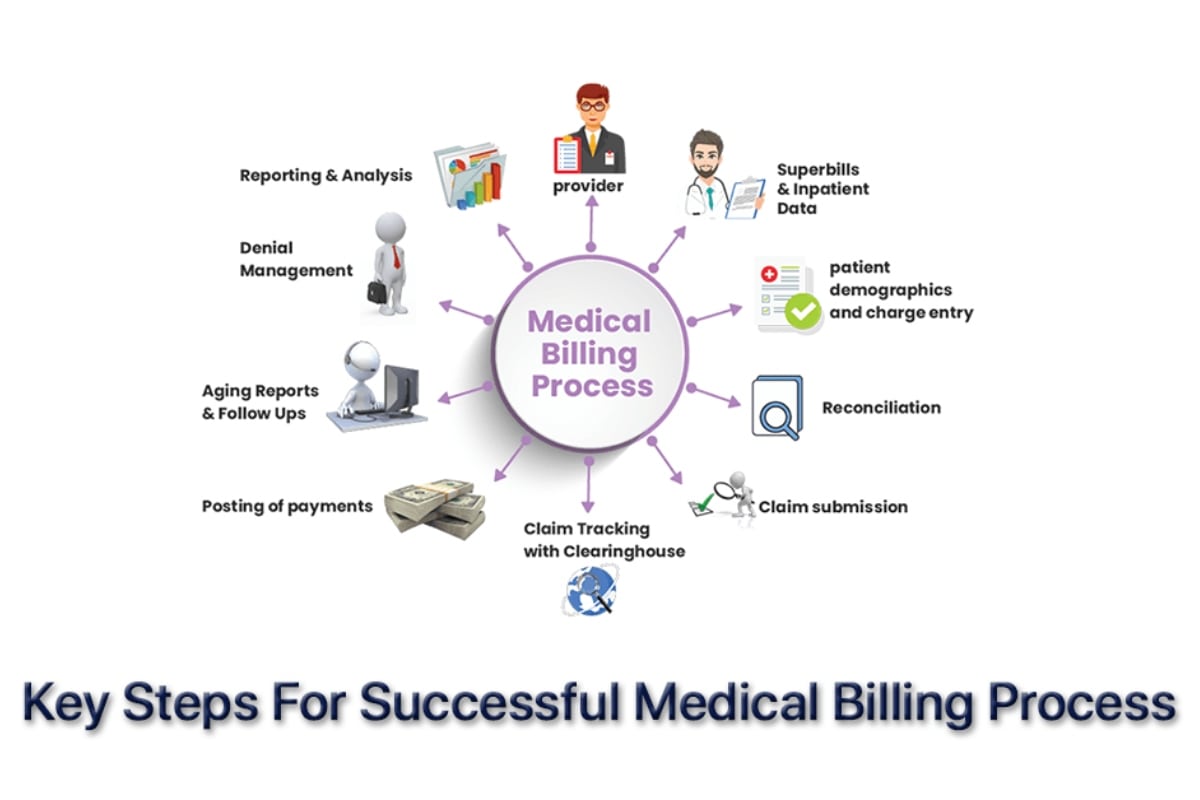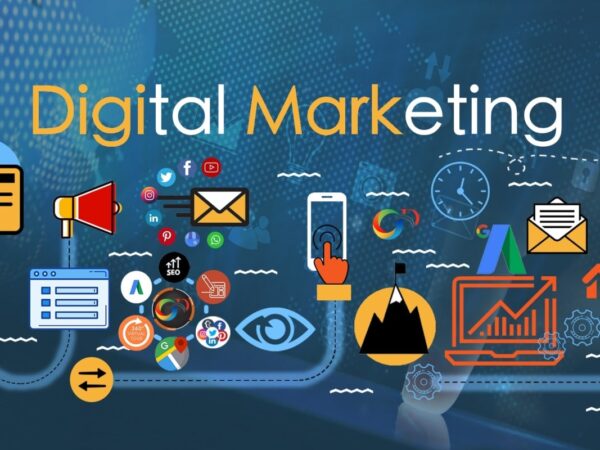
Mastering Medical Practice Billing: A Comprehensive Guide to Boosting Revenue and Efficiency
In today’s rapidly evolving healthcare landscape, managing medical practice billing has become increasingly complex and demanding. As patient expectations rise and regulatory requirements shift,
healthcare providers must adapt their billing processes to ensure financial stability and growth. This comprehensive guide will explore cutting-edge strategies and best practices to elevate your medical practice billing services, streamline operations, and maximize revenue while maintaining a patient-centric approach.
1. Embracing Technology and Automation: The Cornerstone of Modern Medical Billing
In the digital age, leveraging technology and automation is no longer optional—it’s a necessity for medical practices aiming to stay competitive and efficient. By implementing state-of-the-art billing software and automation tools,
your practice can significantly reduce manual errors, accelerate claim processing, and improve overall billing accuracy.
Advanced Billing Software Solutions
Investing in robust billing software is the first step towards modernizing your billing processes. Look for solutions that offer:
- Real-time eligibility verification
- Automated claim scrubbing
- Customizable reporting features
- Integration capabilities with other healthcare systems
These features can dramatically reduce claim denials and ensure faster reimbursements.
Revenue Cycle Management (RCM) Tools
Implementing comprehensive RCM tools can provide a holistic view of your practice’s financial health. These systems often include:
- Predictive analytics for revenue forecasting
- Key performance indicator (KPI) dashboards
- Automated payment posting
- Patient financial responsibility estimators
By utilizing these tools, you can identify trends, anticipate cash flow issues, and make data-driven decisions to optimize your billing processes.
Lost Medical Revenue Calculator
One innovative tool that’s gaining traction in the medical billing sphere is the lost medical revenue calculator. This powerful resource helps practices identify and quantify revenue leakage caused by:
- Undercoding
- Missed charges
- Inefficient billing practices
- Delayed claim submissions
By pinpointing these financial gaps, you can develop targeted strategies to recapture lost revenue and improve your bottom line.
Electronic Health Records (EHR) Integration
Seamless integration between your EHR system and billing software is crucial for maintaining accurate and efficient billing processes. This integration offers several benefits:
- Reduced data entry errors
- Improved coding accuracy
- Faster claim submission
- Enhanced compliance with documentation requirements
Ensure that your chosen billing solution offers robust EHR integration capabilities to streamline your workflow and reduce administrative burden.
Patient Engagement Technologies
Incorporating patient engagement technologies can indirectly boost your billing efficiency:
- Online appointment scheduling systems
- Automated appointment reminders (via text, email, or voice)
- Patient portals for accessing bills and making payments
- Telehealth platforms for remote consultations
These tools not only improve patient satisfaction but also reduce no-shows and increase timely payments, contributing to a healthier revenue cycle.
2. Prioritizing Staff Training and Education: Empowering Your Billing Team
In the ever-changing world of medical billing, continuous education and training are essential for maintaining a high-performing billing service. Investing in your staff’s professional development ensures they’re equipped with the latest knowledge and skills to navigate the complexities of medical billing optimization and coding effectively.
Comprehensive Training Programs
Develop a robust training curriculum that covers:
- Latest ICD-10 and CPT coding updates
- Compliance with HIPAA and other relevant regulations
- Best practices in claim submission and denial management
- Patient communication and financial counseling skills
Consider partnering with professional organizations or online learning platforms to access up-to-date, industry-recognized training materials.
Certification and Credentialing
Encourage and support your billing staff in obtaining relevant certifications, such as:
- Certified Professional Coder (CPC)
- Certified Medical Reimbursement Specialist (CMRS)
- Certified Medical Billing Specialist (CMBS)
These credentials not only enhance your team’s expertise but also boost your practice’s credibility in the eyes of payers and patients.
Ongoing Education and Updates
Establish a culture of continuous learning by:
- Scheduling regular in-house training sessions
- Providing access to webinars and online courses
- Attending industry conferences and workshops
- Subscribing to relevant publications and newsletters
This commitment to ongoing education ensures your team stays ahead of industry changes and best practices.
Cross-Training and Knowledge Sharing
Implement a cross-training program within your billing department to:
- Increase team flexibility
- Reduce bottlenecks during staff absences
- Promote a deeper understanding of the entire billing process
Encourage knowledge sharing through regular team meetings and collaborative problem-solving sessions.
3. Optimizing Billing Processes and Workflow: Streamlining for Success
Efficient billing processes and workflows are crucial for maximizing revenue and minimizing delays in the reimbursement cycle. By critically evaluating and refining each step of your billing cycle, you can eliminate inefficiencies and accelerate the time from service delivery to payment receipt.
Comprehensive Workflow Analysis
Conduct a thorough analysis of your current billing workflow:
- Map out each step from patient check-in to final payment
- Identify bottlenecks and redundant processes
- Solicit feedback from staff at all levels of the billing process
- Benchmark your performance against industry standards
This analysis will provide valuable insights into areas ripe for improvement.
Centralized Billing System Implementation
Implement a centralized billing system that:
- Consolidates all billing tasks and information in one platform
- Provides role-based access for different team members
- Offers real-time updates and notifications
- Facilitates seamless communication between departments
A centralized system reduces errors, improves efficiency, and enhances overall billing management.
Streamlined Check-In and Registration Process
Optimize your patient check-in and registration procedures:
- Implement digital intake forms
- Verify insurance eligibility in real-time
- Collect co-pays and outstanding balances upfront
- Educate patients on their financial responsibilities
These steps can significantly reduce billing errors and improve cash flow.
Proactive Claim Management
Develop a proactive approach to claim management:
- Implement automated claim scrubbing before submission
- Set up alerts for claim status updates
- Establish a systematic process for following up on unpaid claims
- Analyze denial patterns and address root causes
By staying ahead of potential issues, you can reduce claim denials and accelerate reimbursements.
Performance Monitoring and Continuous Improvement
Establish key performance indicators (KPIs) to monitor your billing performance:
- Days in Accounts Receivable (AR)
- Clean Claim Rate
- Collection Rate
- Denial Rate
Regularly review these metrics and use the insights to drive continuous improvement initiatives.
4. Leveraging Data Analytics for Strategic Decision-Making
In the age of big data, harnessing the power of analytics can provide valuable insights to drive your billing strategy and improve overall financial performance.
Predictive Analytics
Utilize predictive analytics to:
- Forecast revenue cycles
- Anticipate seasonal fluctuations in patient volume
- Identify patients at risk of defaulting on payments
- Optimize staffing levels based on expected workload
These insights allow for proactive decision-making and resource allocation.
Benchmarking and Comparative Analysis
Regularly benchmark your billing performance against industry standards and similar practices:
- Compare key metrics such as collection rates and days in AR
- Identify areas where your practice excels or lags behind
- Set realistic improvement goals based on benchmarking data
This comparative analysis helps pinpoint specific areas for improvement and sets achievable targets for your billing team.
Patient Payment Behavior Analysis
Analyze patient payment patterns to inform your billing and collection strategies:
- Identify preferred payment methods
- Determine optimal timing for payment reminders
- Tailor payment plans based on historical data
- Develop targeted communication strategies for different patient segments
By understanding patient payment behaviors, you can implement more effective collection processes and improve overall patient satisfaction.
5. Enhancing Patient Financial Experience
In today’s consumer-driven healthcare environment, providing a positive patient financial experience is crucial for maintaining a healthy revenue cycle and building patient loyalty.
Transparent Pricing and Cost Estimates
Implement tools and processes to provide patients with clear, upfront cost estimates:
- Utilize price transparency tools
- Offer online cost calculators
- Provide detailed explanations of charges
- Train staff to discuss financial matters confidently with patients
Transparency builds trust and reduces billing-related disputes.
Flexible Payment Options
Offer a variety of payment options to accommodate patient preferences:
- Online bill pay portals
- Mobile payment apps
- Payment plans for larger balances
- Credit card on file programs
Flexibility in payment methods can significantly improve collection rates and patient satisfaction.
Financial Counseling Services
Provide comprehensive financial counseling to patients:
- Explain insurance benefits and coverage
- Assist with understanding medical bills
- Offer guidance on available financial assistance programs
- Help patients make informed decisions about their care and financial obligations
These services can reduce patient stress and improve overall satisfaction with your practice.
6. Staying Compliant in a Changing Regulatory Landscape
Maintaining compliance with healthcare regulations is critical for avoiding penalties and ensuring smooth billing operations.
Regular Compliance Audits
Conduct regular internal audits to ensure compliance with:
- HIPAA privacy and security rules
- Medicare and Medicaid billing requirements
- Commercial payer contracts
- State-specific regulations
Identify and address any compliance gaps promptly to mitigate risks.
Compliance Training Program
Develop a comprehensive compliance training program for all staff members:
- Cover key regulations and their impact on billing practices
- Provide scenario-based training to apply compliance knowledge
- Offer refresher courses to keep staff updated on regulatory changes
A well-trained staff is your first line of defense against compliance violations.
Documentation Improvement Initiatives
Implement strategies to improve clinical documentation:
- Provide education on proper documentation techniques
- Use templates and checklists to ensure comprehensive documentation
- Implement concurrent coding review processes
- Leverage technology for real-time documentation feedback
Accurate and complete documentation is essential for compliant billing and optimal reimbursement.
Conclusion: Embracing a Holistic Approach to Medical Billing Excellence
Mastering medical practice billing in today’s complex healthcare environment requires a multifaceted approach. By embracing cutting-edge technology, investing in staff education, optimizing workflows, leveraging data analytics, enhancing the patient financial experience, and maintaining rigorous compliance standards, your practice can achieve superior billing performance.
Remember that improving your billing services is an ongoing process. Regularly assess your strategies, stay informed about industry trends, and be willing to adapt to the changing healthcare landscape. With dedication and the right approach, you can create a billing system that not only maximizes revenue but also enhances patient satisfaction and positions your practice for long-term success.
By implementing these comprehensive strategies, your medical practice can navigate the challenges of modern healthcare billing with confidence, ensuring financial stability and growth while delivering exceptional patient care.









